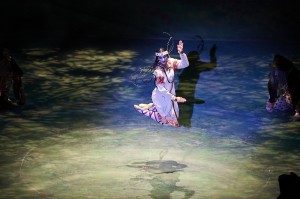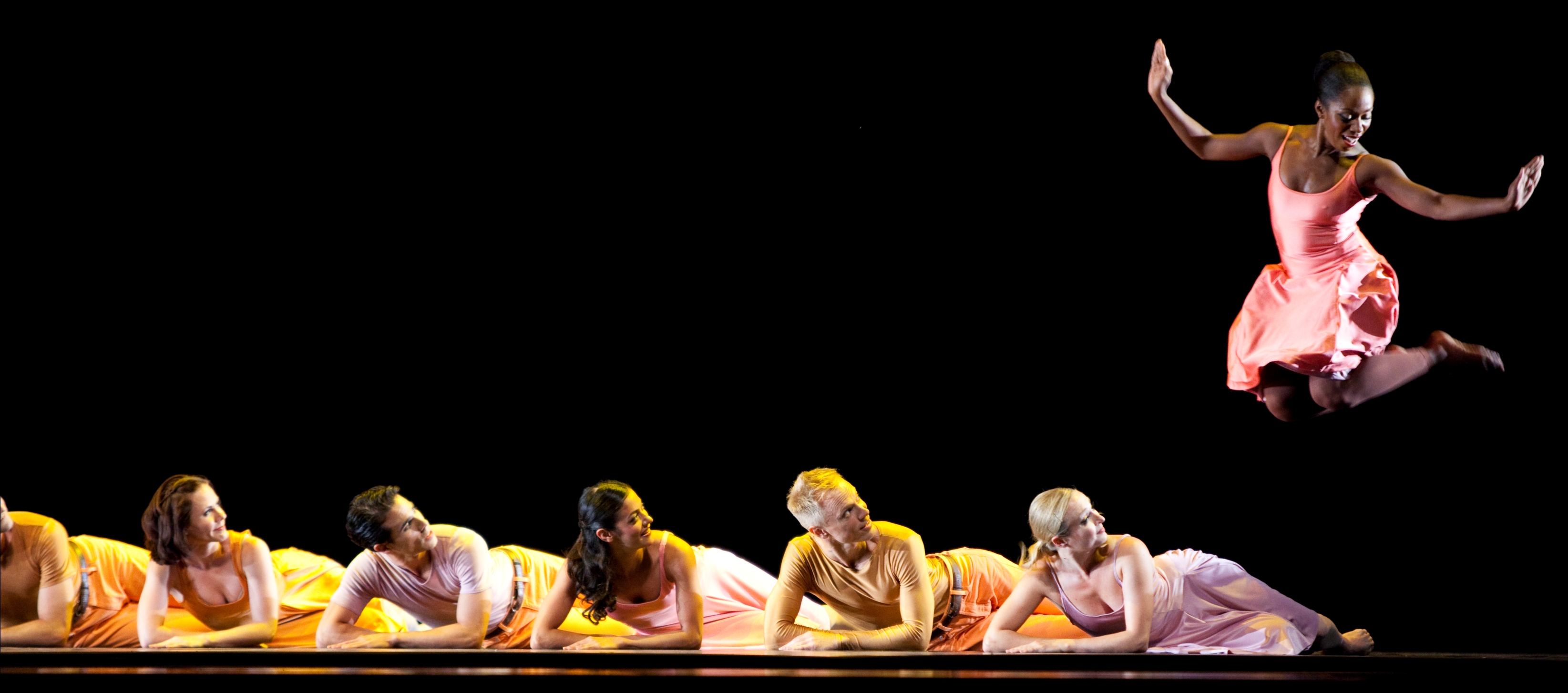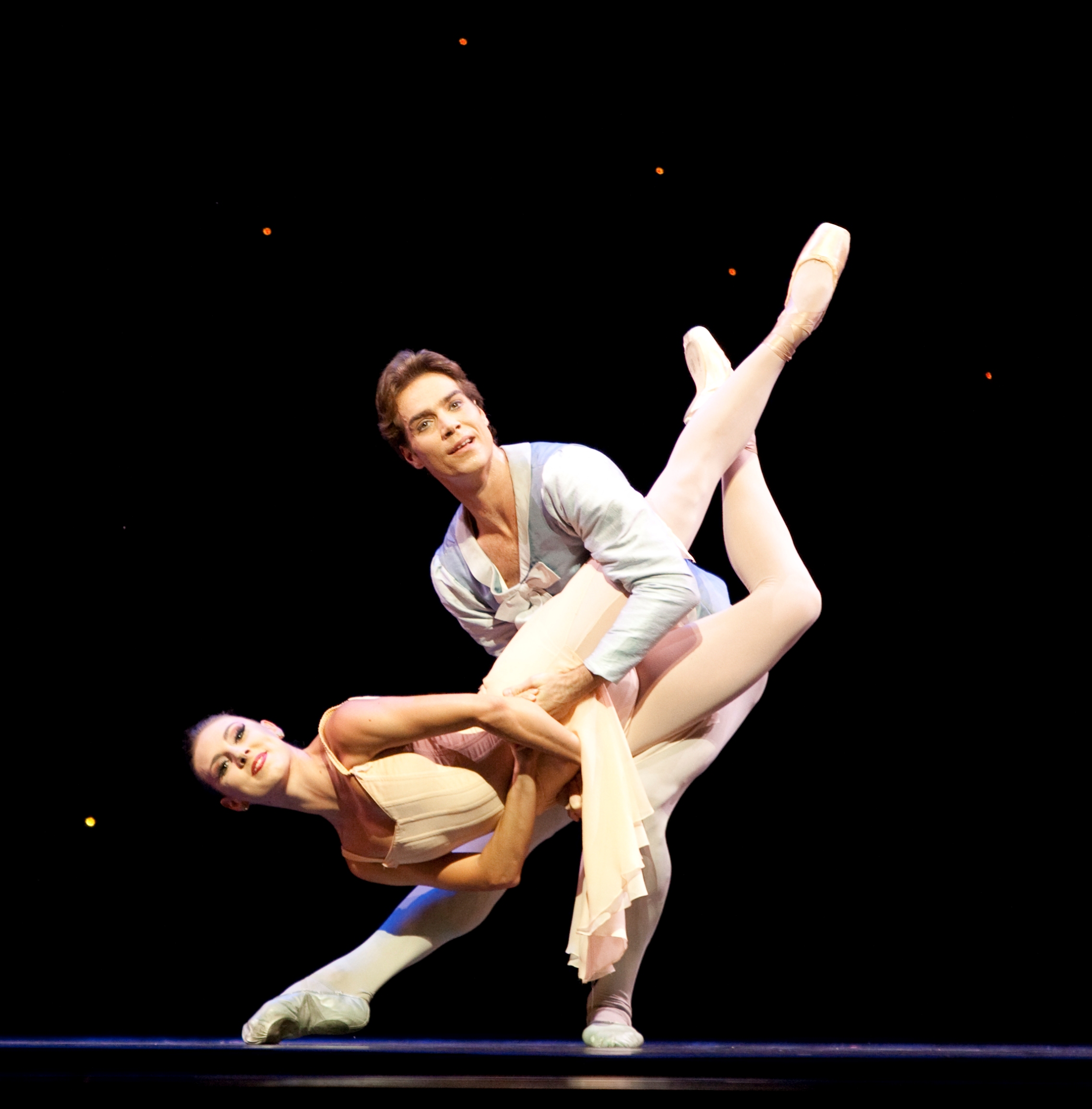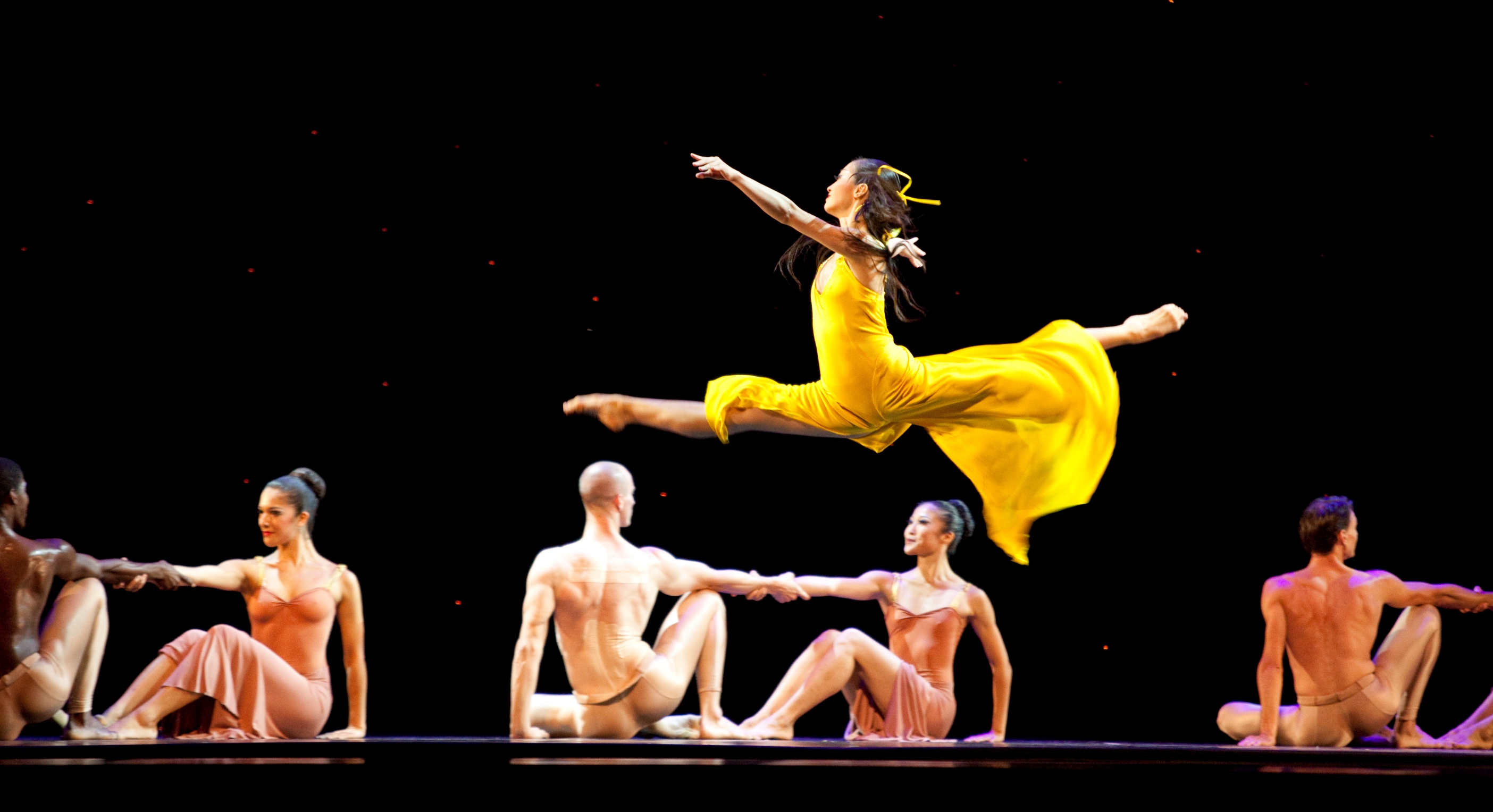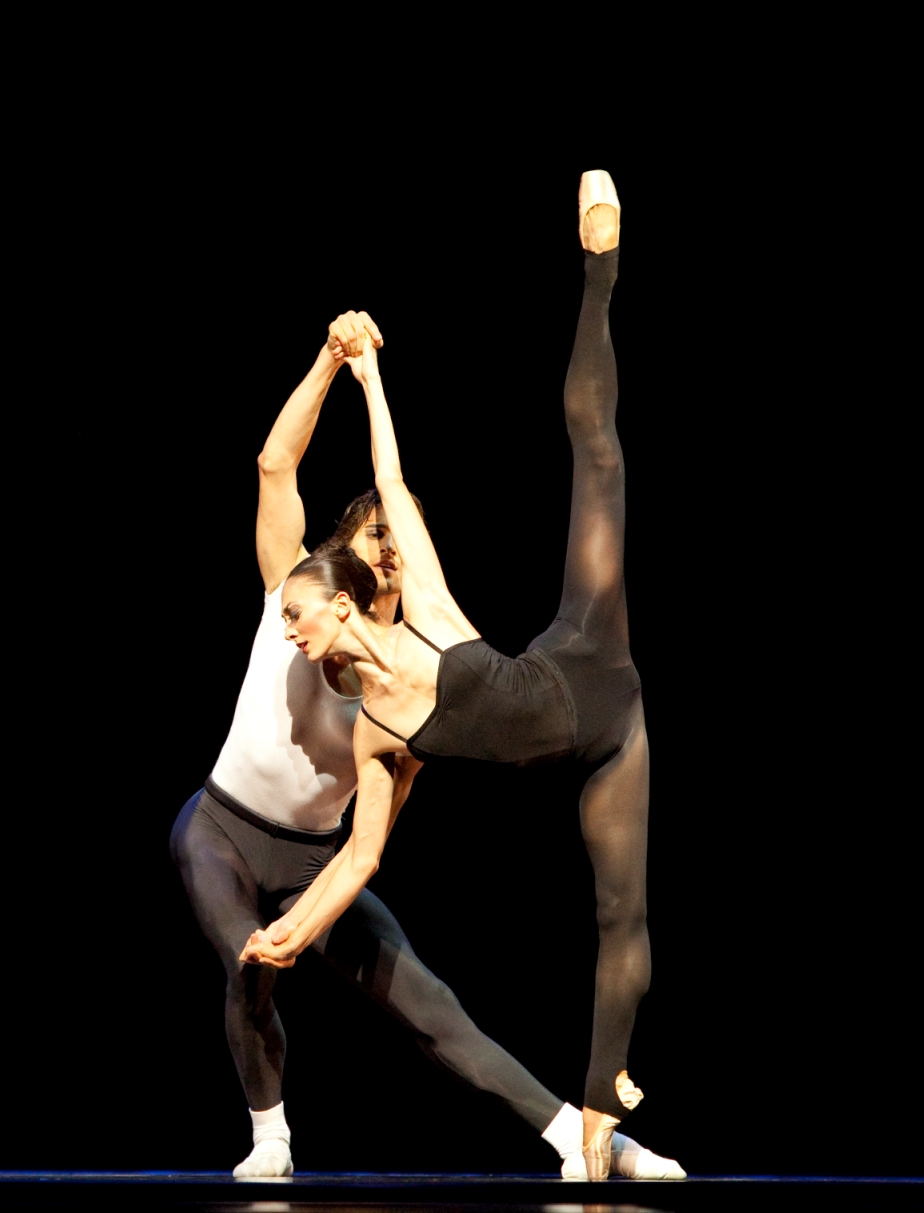Russian choreographers don’t do light and fluffy. At least the ones presented in The Joffrey Ballet‘s Russian Masters program don’t. The four works on the bill, which opened last night and runs through Sunday, span nearly a century of dancemaking and represent pure aesthetic dancing to literally dancing oneself to death. Great “Russian masters” Balanchine, Nijinski, Tchaikovsky, Rachmaninoff, Stravinsky and Khachaturian were joined by the only living artist represented, San Francisco Ballet’s choreographer in residence, Yuri Possokhov, for an evening of daring, dramatic dancing accompanied by the phenomenal Chicago Philharmonic.
Balanchine’s 1956 Allegro Brilliante opened the program with a dazzling display of pure dance. No story to follow here, just fast feet and sparkling technique. Not surprising, the perky cast, lead by the lovely April Daly and Dylan Gutierriez, studied or danced at places that have a heavy Balanchine/neoclassical influence in their rep: Washington Ballet, San Francisco Ballet, Pacific Northwest Ballet and, of course, School of American Ballet. Their solid grasp and love for the style/technique (speedy petite allegro, elongated lines, open arabesque, etc.) really shined. I guess it could be considered light in comparison to the rest of the evening, but definitely not fluffy. Any Balanchine work is hard – understatement – but these dancers were more than up to the task.
A 2012 duet by Possokhov created on Victoria Jaiani and Temur Suluashvili (look, more Russians!) set to an adagio from Spartacus proved a dramatic display obviously focused on Jaiani’s incredibly flexible technical facility. Adagio incorporated interesting inside/out partnering with tricky, twisted grips (some more solid than others) and some trust-inspiring inverted lifts in the couple’s first pas de deux of the night. Possokhov’s Bells, created for Joffrey in 2011, provides another “pure dance” piece, in that there is no story, just his interpretation of the music and some clever creative tweaks on classical technique and traditional Russian folk dance. Slides en pointe, snapping fingers, kisses on each cheek add a fun element to the devilishly difficult choreography. Pas de deuxs by Anastacia Holden and Matthew Adamczyk (flirty), Daly and Fabrice Calmels (sultry), and Jaiani and Suluashvili (passionate) did not disappoint.
The highlight of the evening was the 1987 reconstruction by Millicent Hodson of Vaslav Nijinsky’s Le Sacre du Printemps (The Rite of Spring) celebrating its 100th anniversary this year. In an introductory video of the work, Hodson called it “the ballet that changed the course of history”. Its premiere in 1913 famously invoked a riot in Paris due to the discordant music, non-traditional choreography and shocking ending. The dancers stomp, flat-footed with turned in feet, fall to the ground repeatedly wearing pagan villagers costumes complete with painted faces, braids and animal skins. The “Rite” is a virgin sacrifice of “The Chosen One” (danced with haunting brilliance by Joanna Wozniak) where she must dance until she dies. The women of the clan offer her up as the weakest link and leave her alone to be encircled by the men, who oversee her fate. (Thanks ladies!) Wozniak stands center stage with her head tilted, palms out, feet turned in, still and staring at the audience for what seems like forever only to suddenly burst into rapid, consecutive jumps…a LOT of them. She eventually drops to the ground and the men lift her dead body to the sky. The End. What an image to finish the night on.
An enormous BRAVO to the Chicago Philharmonic and director Scott Speck for a fantastic evening of music. From the beautiful Khachaturian adagio (which sounded so perfect and like a recorded soundtrack that I had to check to make sure it was live) to the notoriously difficult to play – and to listen to – Stravinsky score, they played everything to perfection.

